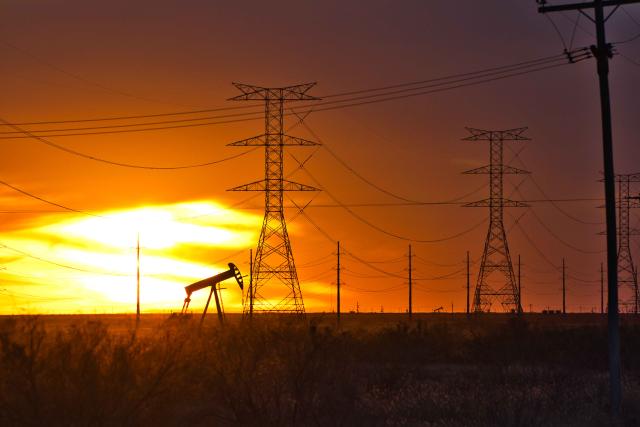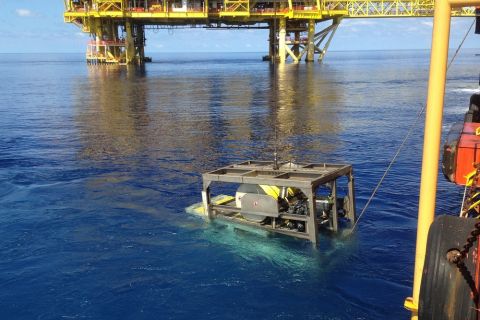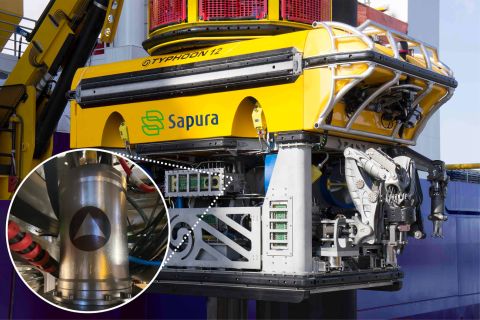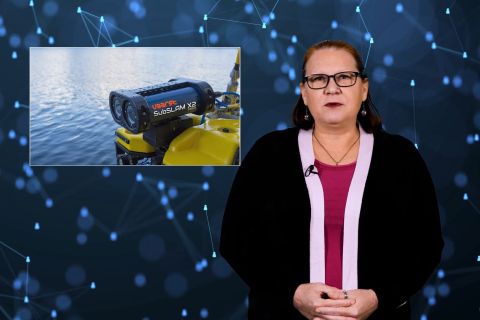
(Source: G B Hart/Shutterstock.com)
[Editor's note: A version of this story appears in the 2020 edition of Oil and Gas Investor’s Minerals Business Supplement. Check back for more stories like this here.]
Far from the cacophony of pandemics, market upheavals, geopolitical sparring and global economic nightmares, minerals exist quietly and literally underground. Similarly, those in the private sector that own those assets continue to operate quietly on figuratively solid ground.
Scott Noble, founder and CEO of Noble Royalties Inc., who has acquired and still manages more than $1 billion in assets covering roughly 10 million acres, said he is concerned by the tendency for many investors to lump the minerals sector with E&Ps.

that large-scale mineral
funds succeed because they are built to behave differently during volatile pricing and activity cycles," said Scott Noble with Noble Royalties Inc.
“We share the reserves [with E&Ps] but not the expenses,” Noble said. “We do not drill, complete or operate oil and gas wells. Instead, we select undivided and diversified mineral positions under key basins, reservoirs and healthy operators. We are not subject to the normal lease operating expenses, which become burdensome to operators during low price cycles, nor are we subject to the capital requirements to develop and drill new wells. We have a material behavioral and low cost advantage in being paid off the gross [production and revenue].
“Mineral players, on the other hand, are relatively risk-averse,” Noble continued. “Mineral funds are historically debt-averse and decline to take on anymore debt than one times or 1½ times EBITDA, so we rarely if ever put ourselves into an aggressive levered situation. We like low cost, net revenue and free cash flow. That’s the whole purpose of being a royalty owner, right?”
Although a mineral fund encompasses some advantages that other parts of the sector do not, this does notimply that the mineral segment will be spared as the industry struggles through a difficult period.
“Until supply, demand and storage issues are balanced, we’re probably in a world where [E&Ps] are either going to choke back their production or store their barrels locally,” Noble said. “Near term, we’re going to witness less production sold, less revenue received and subsequently less drilling. All of these material drivers have a compounding effect on reducing [mineral owners’] revenue the following months. Long-term U.S. production will pull back to a lower baseline of economically and sustainable production volumes. Growth at any rate will disappear, growth at an efficient rate will be available for some, and [there’s] nothing wrong with sustainable reserve replacement E&P models for us mineral owners.”
Expectations
WTI peaked at more than $63/bbl during the first week of 2020. That was several months ago—it only seems like several years ago. At the time, many minerals executives were making routine calculations for the future.
“We were, for the most part, betting that DUCs [drilled but uncompleted wells] would get completed and/or drilled in the next six to 18 months,” Kevin Lorenzen, co-CEO of Momentum Minerals LLC, said.
Those bets are very much off. Also gone is the assumption about rig count, said Nick Varel, founder and CEO of Wing Resources LLC.

part, betting that DUCs
would get completed and/or drilled in the next six to 18 months," said Kevin Lorenzen with Momentum Minerals LLC.
“When you’re looking at undeveloped acreage, you have to assume X amount of rigs over Y amount of area, and the rig count is something that we’ve had to remodel,” Varel said. “All the factors going into the underwriting have brought down the price quite a bit in each basin. It’s really been an exercise over the past 60 days of how to rework a deal.”
Noble, who founded his company in 1997, was somewhat wary in January of what 2020 would hold, especially about the approach by E&Ps and its impact on the minerals space. Crude oil’s rally wouldn’t last. The $60-plus/ bbl price of crude that began in mid-December would endure less than four weeks. By the end of January, WTI’s price was back to about $50/bbl. At February’s end, it was under $45/bbl.
“We saw E&P companies struggling with full-cycle economics and the growing pressure from investors to embrace more sustainable operations,” he said. “At $50 oil, many were looking to consolidate.”
But in the absence of a predictable market, the private-equity drilling companies kept doing what they were doing—drill to increase revenue and aggregate a position. That strategy worked prior to the shale revolution when most drilling was vertical and oil fields were scarce. A great deal of land wasn’t necessary then, and the M&A cycle thrived. Unconventional development with its horizontal drilling techniques requires more acreage to accommodate volume, and E&Ps have since struggled to please investors as a whole.
“When you’re leasing shale, you are leasing the scale of an ocean floor,” Noble said. “You can become so overbalanced in land and potential locations that you will not have enough capital to realize an attractive value for investors.”
The sheer size of the properties, some loaded with decades of inventory, began to give investors pause. Selling the land became difficult. The inevitable result: Excessive location inventory, continued technological advances and dramatic increases in U.S. oil production drove down commodity prices, even before Saudi Arabia/Russia and COVID-19 considerations. M&A needs scarcity to thrive, and the decades of inventories caused traditional sellers to convert to emerging and struggling drillers.
So at the beginning of January, Noble was concerned. The land that many minerals owners and funds were underwriting was badly overpriced. At some point, he thought, somebody is going to do the math and unearth that the undisciplined underwriting that includes assumptions of an unsustainable, aggressive drilling pace and unrealistic economic location inventories will surely need to be corrected by the market.
In an oil and gas downcycle like this, in a devastated economy like this one, being on the wrong end of a market correction is what will be the short-term fate for some overly aggressive minerals executives. They will end up retaining the title of fund CEO but hold the less glamorous responsibilities of an asset manager. Noble knows. He has had that job, and although he was able to provide a healthy return for his investor, he has used the lessons learned from the experience to avoid duplicating it.
Adjustments
To be sure, there remain plenty of opportunities in the minerals space in spite of and, in some cases, as a result of the downcycle. In some ways, it is a matter of adjusting perspective.
“Like most buyers, we’re hoping that it’s going to present an opportunity to buy assets that we believe to be a discount to long-term value,” said James Elder, co-CEO with Lorenzen of Momentum Minerals. “As royalty buyers, we are more focused on long-term valuation of the asset. For those of us in the minerals royalties space who are able to weather this storm and pick up assets during the trough and hold them for a fair amount of time, we feel there is going to be a very good arbitrage to those assets down the road.”
Like all in the industry, Elder said, Momentum changed its outlook on pricing. Just as important, though, was to change its thinking on the development pace of assets and adjust expectations for six months, 12 months, 18 months and further out, he said.
“Before the pandemic crushed prices, we saw a development cycle within a certain period of time, particularly when the completion of DUCs will happen,” Elder said. “Those underwriting assumptions are now out the window, and we’re looking at things in a totally different light. We still believe there’s going to be a lot of opportunity and hopefully the opportunity to buy at a discounted value.”

opportunity to buy assets that we believe to be a
discount to long-term value," said Momentum Minerals' James Elder.
In a low crude price environment expected to stay that way for many months, having the chance to pick up valuable assets at a discounted price is a good assumption on the part of prospective buyers. Sellers, however, may not share that assumption during the early stages of a downcycle, creating a buyer/seller gap. Noble said he understands why landowners might be hesitant to sell soon after prices first collapse. The checks, after all, continue to arrive. Reality may not set in until three or four dramatically reduced royalty payments are received.
“It is important to note that large-scale mineral funds succeed because they are built to behave differently during volatile pricing and activity cycles. Smaller funds, whether an estate or privately held, typically come up short for the balance required to endure industry cycles when compared to larger funds. Owners unfortunately may need to see the rigs lay down and flares disappear in the field to understand why it’s smart to consider selling some and keeping some minerals to balance their fund or family risk appetite,” he said.
It’s not always economics alone, he added. Emotion plays a role in the decision, especially when property has been in a family for generations.
“The No. 1 reason why an owner does not sell is the fear of public ridicule,” Noble said. “I don’t want to hear from my family. This is dad’s. This is granddaddy’s. This is ours, by God, whether it’s great, good or whatever. I am not diversifying. I am riding this one out.”
But when their mindset entertains economics, mineral owners must contemplate their own circumstances. They may have been advised by dad to not accept a low offer, but it’s been some 90 years since the global economy faced this kind of a challenge. Current offers are not low anymore, political support to drill oil wells has changed and funding to drill future wells is being challenged.
Another economic point is a matter of decline rates on smaller estates. The new unconventional wells do not have the same profile as the unitized slow decline fields of the past. Wells in the shale fields typically decline at about 73% the first year and 40% the second. Four years after drilling begins, the value of the minerals is about 9% of what the well was initially.
Even highly educated landowners will struggle to model the risks and rewards if they lack the engineering or financial know-how to navigate the situation. That makes it difficult for a buyer to engage in a conversation about economics, Noble said.
“The combination of high declines, lower pricing and the absence of drilling activity is going to be an unfortunate shock, especially since they’re paying taxes this year for last year’s income,” he said. “Think about that. It may take 100% of this year’s income to pay for taxes last year. They may have zero net income this year because last year was at $55.”
That’s where a team of pros can be helpful. Objective outsiders with expertise in finance, oil and gas futures pricing and engineering can advise a landowner about options as well as when and if it is a good time to sell. This presents an opportunity to narrow the buyer/seller gap and get a transaction completed.
Outlook
Country singer Lefty Frizzell unknowingly wrote the 2020 anthem for the minerals sector in 1950 when he penned the line, “If you’ve got the money, honey, I’ve got the time.”
The well-capitalized players are not unconcerned about present challenges to the country, industry and economy, but they retain confidence because this sector is built to withstand challenges over the long term. (The song’s lyrics divert from the oil and gas theme after the first line.)
“We’re freshly backed with capital,” Varel said. “We have over $100 million currently, and so we’re very much in the market. We’re one of the few companies that has capital at the moment. So all that means is that my outlook is pretty positive.”

companies that has capital at the moment. So all that means is that my outlook is pretty positive," said Nick Varel with Wing Resources LLC.
Varel’s optimism extends to the minerals sector as a whole, calling it the most resilient in the oil and gas industry currently. Those fortunate enough to have placed their bets on U.S. oily basins should be set for a while, he said. Then again, Varel’s Wing Resources sold about 9,000 net royalty acres in the Midland Basin to Alliance Resource Partners LP in mid-year 2019 for about $145 million. Not all members of his peer group are as well-positioned. Many of them, he said, invested during the 2017 to 2019 time frame when prices were considerably higher and the future looked considerably more mundane. Varel doesn’t worry, though, because he believes that prices will return to the $50 range.
“As far as peer group,” he said, “as long as they’re buying sound petrophysics, in the long run they’re going to be OK. This asset class has no clock and no additional capex. It’s just a totally different way to calibrate your mind, looking at oil and gas. You really can weather the storms.”
Elder is less confident about the ability of at least some in the sector to survive.
“I think some of the leaner shops that typically count on buying and selling of assets in a higher frequency to sustain G&A [general and administrative expense], or those that buy solely ahead of the drill bit, might struggle through this environment. Some larger operations like ours are fortunate to have a significantly high operating margin to cover our overhead.”
Momentum’s portfolio is such that it will still be in a strong position even if very low oil prices force producers to shut in 30% or more of its wells, Elder said. The firm has ample amounts of fresh capital to deploy on the assets and keep the lights on.
Noble, backed by Apollo Global Management Inc., is also well-positioned with capital and prepared to be disciplined in this evolving market.
“We are going to have a challenge of an unknown supply and demand gap for an unknown amount of time,” he said. “We don’t know when people are going to go back to normal, but I expect caution and newfound habits to lead to lower demand for oil and natural gas. We should be cautious. There are a lot of reasons to be disciplined and underwrite differently right now in the mineral business.”
The numbers improve as the price of oil improves. At $50/bbl, 60% of the locations in the Eagle Ford become viable at a 20% IRR. It has been a crazy year with all kinds of unprecedented market gyrations, but $40/bbl is not part of many short-term price forecasts. Not yet, anyway.
“My point is,” Noble said, “it’s going to be a long time before mineral buyers go back to underwriting the way they did in December.”
Noble views the next few months as an opportunity to execute his proven strategy to provide capital solutions for E&Ps, mineral funds, land brokers and landowners. The current state of the industry provides a unique chance to reset on assets, he said, as well as rethink strategies and redeploy capital into the newly evolving energy landscape.
Recommended Reading
Forum Energy Signs MOU to Develop Electric ROV Thrusters
2024-03-13 - The electric thrusters for ROV systems will undergo extensive tests by Forum Energy Technologies and SAFEEN Survey & Subsea Services.
Sapura Acquires Exail Rovins’ Nano Inertial Navigation System
2024-02-01 - Exail Rovins’ Nano Inertial Navigation System is designed to enhance Sapura’s subsea installment capabilities.
2023-2025 Subsea Tieback Round-Up
2024-02-06 - Here's a look at subsea tieback projects across the globe. The first in a two-part series, this report highlights some of the subsea tiebacks scheduled to be online by 2025.
TGS Commences Multiclient 3D Seismic Project Offshore Malaysia
2024-04-03 - TGS said the Ramform Sovereign survey vessel was dispatched to the Penyu Basin in March.
Tech Trends: Autonomous Drone Aims to Disrupt Subsea Inspection
2024-01-30 - The partners in the project are working to usher in a new era of inspection efficiencies.






